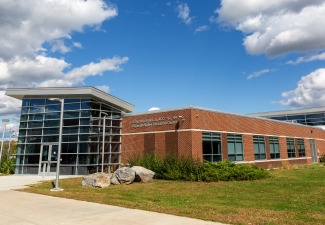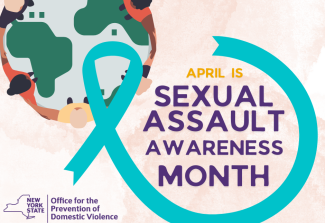Class Uses Campus Civility Initiative to Study Issue Among SUNY Plattsburgh Students
A campaign at SUNY Plattsburgh to foster civility among faculty and staff spurred a communication professor to ask her students: Just how civil are they?
Last fall, when the college launched Civility in the Workplace, a joint labor/management educational campaign that included a campus-wide employee survey on civility issues, Dr. Kirsten Isgro, assistant professor of communication studies, took notice.
Campaign Served as Springboard for Student Efforts
It’s not that Isgro was being uncivil. She saw the initiative as a good springboard for her senior seminar on organization communication in which her students could conduct a civility survey among their peers. She began by having the students read a Harper’s Magazine article, “The Albany Handshake,” which looks at New York state government and what author Christopher Ketcham called “the most dysfunctional legislature in the United States.”
After that, the students listened to a “This American Life” public radio program, “The Petty Tyrant,” about a Schenectady, N.Y., school maintenance man who bullied and intimidated his workers, sexually harassed them, vandalized their property, planted explosives in their cars and ultimately ended up in jail.
Isgro then asked them, “What is civility?”
A semester-long project ensued, culminating in what she called a communication audit, in this case using the SUNY Plattsburgh Civility Committee’s civility survey.
Class members launched a student survey that mirrored the faculty/staff survey with questions adjusted to students’ circumstances. For instance, instead of asking about workplace civility, the students’ survey asked about classroom civility issues. In addition to the survey, Isgro asked her students to interview a faculty member, a staff member and a student independently of the survey. From this information, they were required to ultimately present their findings to the civility committee as a final project.
Differences in Definition
One of the first findings was that only 124 students responded, giving them a shallow pool from which to gather substantive data. Another common thread they discovered was that respondents had a problem understanding exactly what civility — or incivility — is.
Tim Maggio, a senior public relations major, said they found a lot of the respondents didn’t know how to define what civility was.
“There were a lot of different takes on the term,” Maggio said. “People would say texting or calling someone during class was being uncivil, but even those had different levels of incivility.”
Learning from the Process
Isgro used these incongruities as a learning tool.
“There was no conclusion we could make based on the data,” she said. “The survey was too long, too complicated. We wanted it to be the same, or as close to the faculty/staff survey as we could make it so we could have a basis for comparison, but that was problematic in and of itself.”
The ultimate take-away for Isgro and her students was that there needs to be a starting point — a place to begin the conversation — Isgro said. She saw this in her students’ end-of-class opinion questionnaire.
“I never really thought about civility before this class,” one student opined. “Now I watch what I do a lot more.”
“Prior to this class, I did not think much of civility,” another student wrote on the questionnaire. “This campaign forced me to look inward on our school from an organizational standpoint. Civility affects all aspects of campus. There is a need for heightened awareness.”
News
SUNY Plattsburgh, NCCC Announce New Admissions Initiative

SUNY Adirondack Students Benefit from New Dual Agreement with SUNY Plattsburgh Queensbury

SUNY Recognizes Two Plattsburgh Seniors for Excellence in Academics, Leadership
